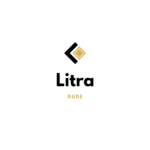Introduction: Why Study Prose?
Prose is everywhere—from novels and essays to speeches and diaries. But what makes it different from poetry? How do writers craft compelling narratives, descriptions, and arguments?
BEGE-141: Understanding Prose, a key course in IGNOU’s Bachelor’s in English, helps students explore these questions. Whether you’re analyzing H.G. Wells’ sci-fi descriptions or dissecting Charles Dickens’ ironic character sketches, this course sharpens your ability to read, interpret, and appreciate prose.
In this guide, we’ll break down the syllabus, highlight key concepts, and provide exam-friendly notes with examples from prescribed texts (like The War of the Worlds). Let’s dive in!
📚 Course Structure: 4 Blocks of Prose
BEGE-141 is divided into four blocks, each focusing on different prose forms:
1. Block 1: Varieties of Prose
Focus: Descriptive, Narrative, and Expository Prose
Key Takeaways:
- Descriptive Prose (e.g., H.G. Wells’ The War of the Worlds) paints vivid scenes.
- Example: “A big greyish, rounded bulk… glistened like wet leather.” (Visual + Simile)
- Narrative Prose tells a story (novels, short stories).
- Expository Prose explains ideas (essays, articles).
Exam Tip: Spot how these styles blend in passages.
2. Block 2: Short Stories & Essays
Focus: Structure, themes, and techniques.
Example from Syllabus:
- Irony in Prose: Dickens’ “He had but one eye, and the popular prejudice runs in favour of two…” uses understatement to mock societal norms.
3. Block 3: Biography & Autobiography
Focus: Life-writing (objective vs. personal perspectives).
Exam Insight: Compare how biographers vs. autobiographers present facts.
4. Block 4: Diary, Speech, Letters, Travelogues
Focus: Informal vs. formal prose.
Example: A diary entry is subjective; a speech is persuasive.
Key Literary Devices in Prose (With Examples)
To analyze prose effectively, recognize these techniques:
1. Imagery
- “Two luminous discs like eyes… tentacles wriggled in the air.” (The War of the Worlds)
- Why it works: Appeals to sight/touch, creating horror.
2. Irony
- “He is a thin man… has nine children.” (Implies hardship through understatement.)
3. Suspense-Building
- Wells slowly reveals the Martians: first shadows, then eyes, then full body.
4. Point of View
- First-person narrators (like in The War of the Worlds) make stories feel personal.
How to Analyze Prose for Exams
1. Identify the Prose Type (Descriptive? Narrative? Expository?).
2. Highlight Literary Devices (Similes, metaphors, irony).
3. Note the Tone (Humorous? Serious? Satirical?).
4. Connect to Themes (Fear, survival, social critique).
Example:
- The War of the Worlds passage uses description + narrative to build terror. Devices:
- Simile (“like wet leather”)
- Sensory details (“thud like… leather”)
- Symbolism (Martians = colonial invaders).
Exam Preparation Tips
- Practice Close Reading: Annotate passages for devices/themes.
- Compare Forms: How is a diary different from a biography?
- Use Examples: Refer to syllabus texts (e.g., Wells, Dickens).
- Write Concisely: IGNOU values clear, structured answers.
Additional Resources
- IGNOU’s Study Material (Block summaries are gold!).
- YouTube: Watch breakdowns of prose techniques.
- Quizzes: Test yourself on literary devices.
Conclusion: Master Prose for Exams & Beyond
BEGE-141 isn’t just about passing—it’s about reading critically and writing effectively. Whether dissecting Martian invasions or ironic character sketches, this course trains you to see the craft behind e
